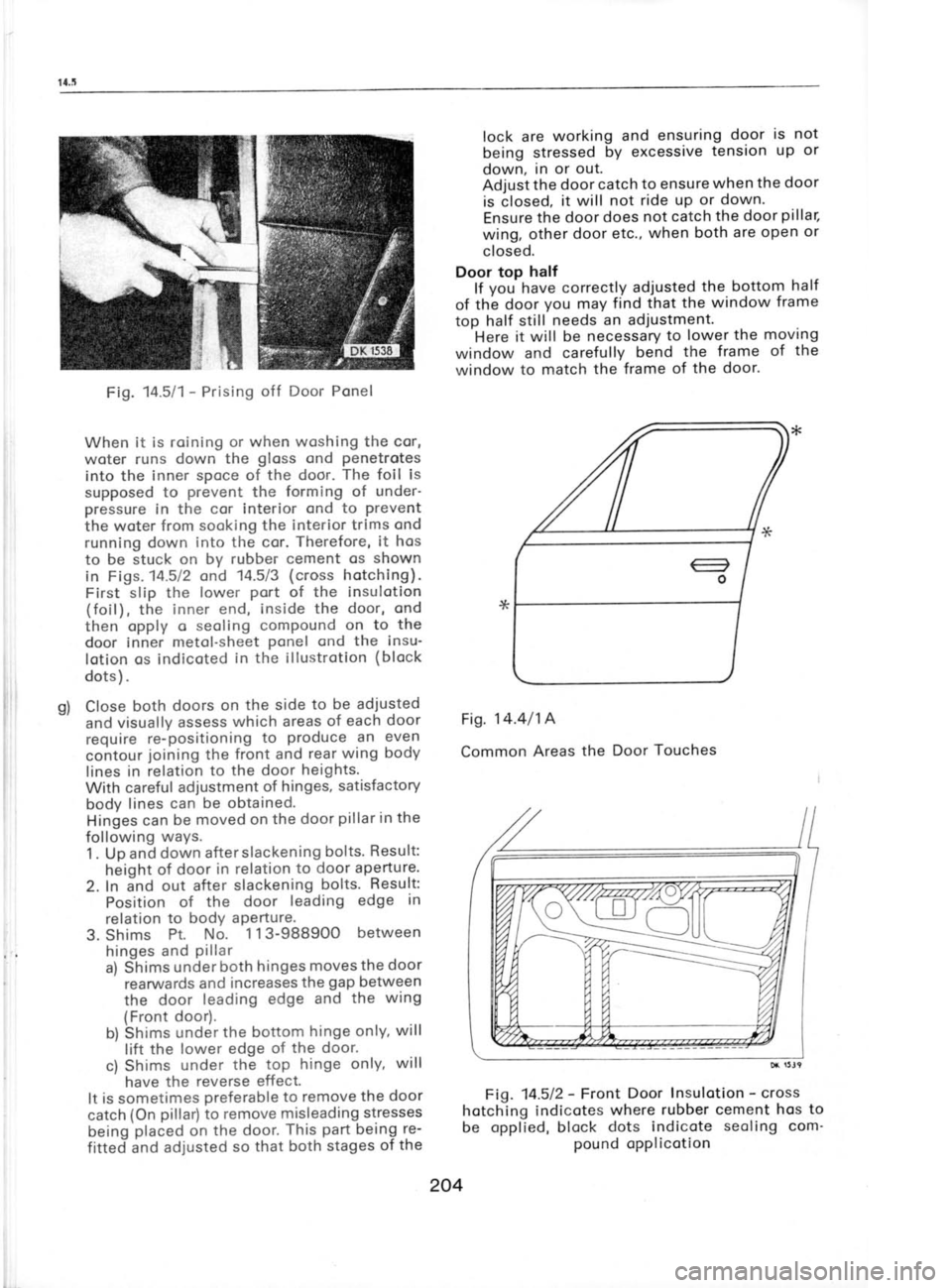height adjustment SKODA 120 LSE 1980 Workshop Manual
[x] Cancel search | Manufacturer: SKODA, Model Year: 1980, Model line: 120 LSE, Model: SKODA 120 LSE 1980Pages: 238, PDF Size: 47.09 MB
Page 195 of 238

Fig.
M511-
Prising off Door Ponel
When it is roining or when woshing the cor,
woter runs down the gloss
ond penetrotes
into the inner spoce of the door. The
foil is
supposed to prevent
the forming of under-
pressure in the cor interior ond to prevent
the woter from sooking the interior trims ond
running down into the cor. Therefore,
it hos
to be stuck on by rubber cement os shown
in Figs. 14.512 ond 14.5/3 (cross hotching).
First slip the lower port
of the insulotion
(foil), the inner end, inside the door, ond
then opply o seoling compound on to
the
door inner metol-sheet ponel
ond the insu-
lotion os indicoted in the illustrotion (block
dots ) .
Close both doors
on the side to be adjusted
and visually assess which areas of each door
require re-positioning to produce
an even
contour joining
the front and rear
wing body
lines in relation to the door
heights.
With careful adjustment of hinges, satisfactory
body lines
can be obtained.
Hinges can
be moved on the door pillar in
the
following ways.
1 . Up and down after slackening bolts.
Result:
height of door in relation to door ap_erture.
2. In and out after slackening bolts. Result:
Position of
the door leading edge in
relation to bodY aPerture'
3. Shims Pt.
No. 1 13-98B9OO between
hinges and pillar
a) Shims under
both hrnges moves
the door
rearwards and
increases the gap
between
the door leading
edge and the
wing
(Front door).
b) Shims under the bottom hinge
only, will
lift the lower edge
of the door.
c) Shims under the top
hinge only, will
have the reverse effect.
It is
sometimes preferable to remove
the door
catch (On pillar)
to remove misleading stresses
being placed
on the door. This part
being re-
fitted and adjusted so
that both stages of
the lock are
working and
ensuring door is not
being stressed by
excessive tension
up or
down, in or out.
Adjust the door
catch to ensure when
the door
is closed, it will
not ride up or down'
Ensure the door does not catch the door pillar,
wing, other door etc., when both are open or
closed.
Door top half
lf you-have correctly
adjusted the
bottom half
of thb door you
may find that the window frame
top half still needs an adjustment.
Here it will be necessary to
lower the moving
window and carefully bend the
frame of the
window to match the frame
of the door'
Fig. 14.4/14
Common Areas
the Door Touches
Fig. 14.512- Front
Door lnsulotion -
":t;
hotching indicotes where
rubber cement hos to
be opplied, block dots indicote seoling
com'
pound opplicotion
204